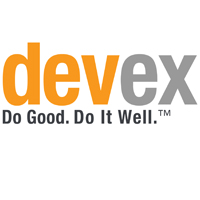open organization
See the following -
2 Tools for Transforming Senior Management into Open Leaders
 This is the third article in our "Open Leadership Development" series. In part 1, I shared how we got started with building a leadership development system for our open organization. In part 2, I walked through four stages of leadership development in an open organization. Now, I'd like to share some leadership tools we've created for our open organization and published on GitHub under a Creative Commons license. One of my favorite homegrown pieces of our open leadership system is the OPT model, which was developed by my colleague Jan Smith, based on her observations within Red Hat and experience working with various leadership models. As you'll see, it's a strengths-based approach to development...
This is the third article in our "Open Leadership Development" series. In part 1, I shared how we got started with building a leadership development system for our open organization. In part 2, I walked through four stages of leadership development in an open organization. Now, I'd like to share some leadership tools we've created for our open organization and published on GitHub under a Creative Commons license. One of my favorite homegrown pieces of our open leadership system is the OPT model, which was developed by my colleague Jan Smith, based on her observations within Red Hat and experience working with various leadership models. As you'll see, it's a strengths-based approach to development...
- Login to post comments
Elevating Open Leaders By Getting Out Of Their Way
 Today, we're seeing the rapid rise of agile organizations capable of quickly and effectively adapting to market new ideas with large-scale impacts. These companies tend to have something in common: they have a clear core direction and young, energetic leaders-leaders who encourage their talented employees to develop their potential. The way these organizations apply open principles to developing their internal talent-that is, how they facilitate and encourage talented employees to develop and advance in all layers of the organization-is a critical component of their sustainability and success. The organizations have achieved an important kind of "flow," through which talented employees can easily shift to the places in the organization where they can add the most value based on their talents, skills, and intrinsic motivators. Flow ensures fresh ideas and new impulses. After all, the best idea can originate anywhere in the organization-no matter where a particular employee may be located.
Today, we're seeing the rapid rise of agile organizations capable of quickly and effectively adapting to market new ideas with large-scale impacts. These companies tend to have something in common: they have a clear core direction and young, energetic leaders-leaders who encourage their talented employees to develop their potential. The way these organizations apply open principles to developing their internal talent-that is, how they facilitate and encourage talented employees to develop and advance in all layers of the organization-is a critical component of their sustainability and success. The organizations have achieved an important kind of "flow," through which talented employees can easily shift to the places in the organization where they can add the most value based on their talents, skills, and intrinsic motivators. Flow ensures fresh ideas and new impulses. After all, the best idea can originate anywhere in the organization-no matter where a particular employee may be located.
- Login to post comments
Fixing Docs One README at a Time
 "Documentation is highly valued, frequently overlooked, and a means for establishing inclusive and accessible communities," the GitHub team notes in their brand-new Open Source Survey. Based on 5,500 responses, the survey reveals that 93% of respondents say "incomplete or outdated documentation is a pervasive problem." However, only "60% of contributors rarely or never contribute to documentation." These stats won't surprise anyone who has spent more than a few minutes clicking through GitHub repositories. How many times have you clicked on a GitHub repo, skimmed the README, and thought: "Sounds interesting, but what does it actually do?"...
"Documentation is highly valued, frequently overlooked, and a means for establishing inclusive and accessible communities," the GitHub team notes in their brand-new Open Source Survey. Based on 5,500 responses, the survey reveals that 93% of respondents say "incomplete or outdated documentation is a pervasive problem." However, only "60% of contributors rarely or never contribute to documentation." These stats won't surprise anyone who has spent more than a few minutes clicking through GitHub repositories. How many times have you clicked on a GitHub repo, skimmed the README, and thought: "Sounds interesting, but what does it actually do?"...
- Login to post comments
Hard to Communicate with Other Teams? Check Out These Tips
 When teams in the same organization—or even across organizational boundaries—start to collaborate, they will most likely realize that not all of their goals align. The IT team, for instance, might not have the same criteria for success as the sales team. Different teams have different benchmarks, even if the teams are part of a larger organization (as in the case of relationships between a developer team and an operations team). But the teams all strive towards the same goal, which is to make the organization successful. And they rely on each other to accomplish that goal. For this reason, learning more about why a team is working on a specific project, not just focusing on how they're involved and what the project is about, can help you foster better relationships across your organization...
When teams in the same organization—or even across organizational boundaries—start to collaborate, they will most likely realize that not all of their goals align. The IT team, for instance, might not have the same criteria for success as the sales team. Different teams have different benchmarks, even if the teams are part of a larger organization (as in the case of relationships between a developer team and an operations team). But the teams all strive towards the same goal, which is to make the organization successful. And they rely on each other to accomplish that goal. For this reason, learning more about why a team is working on a specific project, not just focusing on how they're involved and what the project is about, can help you foster better relationships across your organization...
- Login to post comments
Lessons In Openness From Japan's "Business Reinvention"
 In The Business Reinvention of Japan, Ulrike Schaede explores Japan's approach to economic development in the late 20th and early 21st century. Her thesis is that this approach-what she calls an "aggregate niche strategy"-offers important lessons for the West by balancing the pursuit of corporate profit with social stability, economic equality, and social responsibility and sustainability. It's also a case study in the power of open organization principles, which come to life in Schaede's account. I would argue that Japan's "aggregate niche strategy" was successful, in part, because of them. In this review, I'll explore Schaede's argument about Japan's economic development in order to demonstrate how open principles played a role in Japan's "reinvention." In this first part, I'll provide some historical, economic context necessary for understanding Schaede's argument. In the next part, I'll explore in more detail the implications of Japan's strategy and the role open principles clearly played in it.
In The Business Reinvention of Japan, Ulrike Schaede explores Japan's approach to economic development in the late 20th and early 21st century. Her thesis is that this approach-what she calls an "aggregate niche strategy"-offers important lessons for the West by balancing the pursuit of corporate profit with social stability, economic equality, and social responsibility and sustainability. It's also a case study in the power of open organization principles, which come to life in Schaede's account. I would argue that Japan's "aggregate niche strategy" was successful, in part, because of them. In this review, I'll explore Schaede's argument about Japan's economic development in order to demonstrate how open principles played a role in Japan's "reinvention." In this first part, I'll provide some historical, economic context necessary for understanding Schaede's argument. In the next part, I'll explore in more detail the implications of Japan's strategy and the role open principles clearly played in it.
- Login to post comments
Open Education: There Isn't an App for That
 Open source software has saved my district-Penn Manor School District in Lancaster County, Pennsylvania-more than a million dollars on its technology budget. But more importantly, making a deliberate and concerted effort to infuse open principles and practices into our learning environments has cultivated a vibrant and inclusive learning community that cuts across the school. And as a result, student success has exceeded our expectations. But how do schools put open ideas into practice to foster future innovators and leaders? It's not as simple as installing Linux on 4,000 student laptops, holding hands, and singing the alma mater in the high school cafeteria.
Open source software has saved my district-Penn Manor School District in Lancaster County, Pennsylvania-more than a million dollars on its technology budget. But more importantly, making a deliberate and concerted effort to infuse open principles and practices into our learning environments has cultivated a vibrant and inclusive learning community that cuts across the school. And as a result, student success has exceeded our expectations. But how do schools put open ideas into practice to foster future innovators and leaders? It's not as simple as installing Linux on 4,000 student laptops, holding hands, and singing the alma mater in the high school cafeteria.
- Login to post comments
Open Source Software's Implications Beyond Software
 Jim Whitehurst, CEO of Red Hat, was sporting his awesome red shoes as he spoke to a crowded room at All Things Open last week. During his keynote on Day 1, he talked about how open source is a key part of the open organization, but what we're all looking to achieve has implications far beyond software. Jim began his keynote by explaining why there is a need for the principles of open source in business. If we think of the world we come from and the world we are coming into we see that there is a long line of change...
Jim Whitehurst, CEO of Red Hat, was sporting his awesome red shoes as he spoke to a crowded room at All Things Open last week. During his keynote on Day 1, he talked about how open source is a key part of the open organization, but what we're all looking to achieve has implications far beyond software. Jim began his keynote by explaining why there is a need for the principles of open source in business. If we think of the world we come from and the world we are coming into we see that there is a long line of change...
- Login to post comments
OSEHRA Proposes Visionary Open Digital Health Platform for the VA
 The Veterans Health Administration (VHA) recently released a Request for Information (RFI) calling for advice on how to build an open, "interoperable digital health platform." The RFI received 40 responses. Only one of those was publicly released, the one from OSEHRA. That the open source EHR organization was the only one that has been open in their submissions, by itself, tells a story. There are some in the VA proposing replacing the open source VistA EHR with a "Commercial" lock-in product. Proprietary EHR vendors are circling the VA like sharks smelling blood in the water, and they don't want the public to know what they are up to...The OSEHRA response below. Note that several dozen OSEHRA member companies and associates participated in drafting this response.
The Veterans Health Administration (VHA) recently released a Request for Information (RFI) calling for advice on how to build an open, "interoperable digital health platform." The RFI received 40 responses. Only one of those was publicly released, the one from OSEHRA. That the open source EHR organization was the only one that has been open in their submissions, by itself, tells a story. There are some in the VA proposing replacing the open source VistA EHR with a "Commercial" lock-in product. Proprietary EHR vendors are circling the VA like sharks smelling blood in the water, and they don't want the public to know what they are up to...The OSEHRA response below. Note that several dozen OSEHRA member companies and associates participated in drafting this response.
- Login to post comments
Should Your NGO Go Open Source?
 The open source model of universal access and collaborative intelligence has extended from Web development to global development. NGO leaders can maximize the impact of their organizations either by taking their models to scale or opening the books on their projects and programs and allowing peer organizations to take them and run with them. Whether proprietary information belongs in the business of fighting poverty is open to debate. On one hand, intellectual property can drive competition and innovation, but on the other hand, collaborative models can lead to greater success stories.
The open source model of universal access and collaborative intelligence has extended from Web development to global development. NGO leaders can maximize the impact of their organizations either by taking their models to scale or opening the books on their projects and programs and allowing peer organizations to take them and run with them. Whether proprietary information belongs in the business of fighting poverty is open to debate. On one hand, intellectual property can drive competition and innovation, but on the other hand, collaborative models can lead to greater success stories.
- Login to post comments
Tips and Top Presentations from Write the Docs Portland 2017
 Imagine a room full of smart, funny, and quirky people who all love documentation, technology, and... food. Put all that together and you have Write the Docs (WTD) in Portland—a community conference where documentarians meet to discuss the things we love the most. WTD is a direct descendant of Read the Docs, a site that hosts documentation of open source software. Because of its origin in the open source movement, WTD is open to a variety of job titles who all care about documentation and clear communication. This year, we had QA people, librarians, software developers, and, of course, technical writers and editors, with some User eXperience (UX) people thrown in for good measure...
Imagine a room full of smart, funny, and quirky people who all love documentation, technology, and... food. Put all that together and you have Write the Docs (WTD) in Portland—a community conference where documentarians meet to discuss the things we love the most. WTD is a direct descendant of Read the Docs, a site that hosts documentation of open source software. Because of its origin in the open source movement, WTD is open to a variety of job titles who all care about documentation and clear communication. This year, we had QA people, librarians, software developers, and, of course, technical writers and editors, with some User eXperience (UX) people thrown in for good measure...
- Login to post comments
To Be An Open Leader, Listen To Your Heart
 Allowing talented leadership to excel in a more open organizational structure can determine a young company's success. But in order to transform into a more open organization, you'll need to provide that space for talented leaders to grow. This doesn't always come easy to leaders. Ultimately, however, the only way to do it is to begin with yourself-and to address the issue not only your head but also your heart, your feelings. You might do this in a number of areas, but in this article, I'll focus on how you currently make decisions in your organization.
Allowing talented leadership to excel in a more open organizational structure can determine a young company's success. But in order to transform into a more open organization, you'll need to provide that space for talented leaders to grow. This doesn't always come easy to leaders. Ultimately, however, the only way to do it is to begin with yourself-and to address the issue not only your head but also your heart, your feelings. You might do this in a number of areas, but in this article, I'll focus on how you currently make decisions in your organization.
- Login to post comments
What to Do When People Start Hacking Your Open Source Culture
 I've previously written about the fact the Apache Software Foundation offers an exemplar of large-scale open source governance. Even with those supreme qualities, things can still go wrong. Apache offers some of the best protections for open source contributors but its mature rules can be manipulated by skilled politicians and/or determined agendas. What can we learn from their experience?...
I've previously written about the fact the Apache Software Foundation offers an exemplar of large-scale open source governance. Even with those supreme qualities, things can still go wrong. Apache offers some of the best protections for open source contributors but its mature rules can be manipulated by skilled politicians and/or determined agendas. What can we learn from their experience?...
- Login to post comments